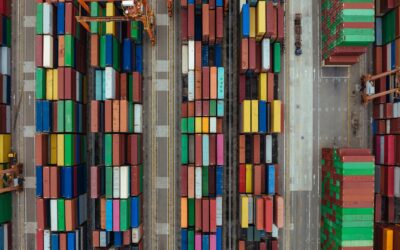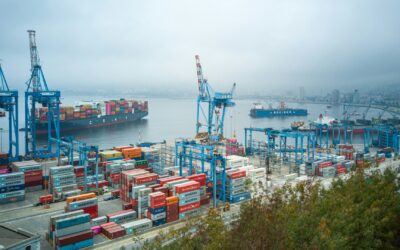The supply chain has become increasingly complex as the world economy continues to globalize. A recent study by the World Economic Forum found that only 58% of companies felt they had a good understanding of their supply chain. To remain competitive, companies must increase transparency and visibility in their supply chains.
The supply chain is a system of organizations, people, activities, information, and resources involved in moving a product or service from supplier to customer. Many moving parts in a supply chain make it challenging to track where things are and how they’re moving. This can be a big problem for companies who want to be sure their products are ethically sourced and produced.
To improve transparency in the supply chain, organizations need to have visibility into every step of the process, from raw materials to finished products. This can be achieved through various ways, such as:
Develop Clear Policies and Procedures
By doing so, businesses can ensure that all stakeholders know the expectations and requirements for participating in the supply chain. Additionally, clear policies and procedures can help to streamline the supply chain process, making it more efficient and less susceptible to errors.
Having well-defined policies and procedures helps everyone in the supply chain understand their roles and responsibilities. This can help avoid potential problems before they arise. Some tips for developing clear policies and procedures include:
- Define the roles and responsibilities of all stakeholders.
- Establish clear communication channels between all parties involved in the supply chain.
- Create a system for tracking progress and documenting changes throughout the supply chain process.
- Regularly review and update policies and procedures as needed.
Educate and Train Employees
Educating and training employees on the importance of supply chain transparency is one way to help improve overall transparency. By understanding the benefits of transparency, employees can be better equipped to make decisions that ultimately lead to a more efficient and effective supply chain. Additionally, educating employees on the various aspects of the supply chain can help them identify potential areas of improvement.
Collect and Manage Information
This can be done by keeping track of supplier performance, tracking inventory levels, and monitoring shipments. By collecting and managing this information, businesses can identify issues early on and take corrective action to prevent disruptions in the supply chain. Additionally, this data can improve forecasting and planning, leading to a more efficient and effective supply chain.
Implement Technology and Software Solutions
Technology and software solutions can provide real-time visibility into the location of goods and assets as they move through the supply chain. This visibility can help identify potential bottlenecks and issues early on before they cause disruptions further down the line.
Technology and software solutions can also help automate and streamline communication between different parties in the supply chain, making it easier to share information and coordinate activities. Some of the most influential technology and software solutions for improving supply chain transparency include:
Blockchain
The immutable transaction record of blockchain makes it a valuable tool for tracing commodity origins and establishing reliable sources of supply data, even when the parties involved have competing interests and little reason to trust one another.
Companies may use track-and-trace software to keep track of where their items are in the supply chain, and blockchain has the potential to improve the efficiency of this process. This can help to prevent sensitive data leaks, detect counterfeit goods and fraud, identify high-risk vendors, demonstrate compliance with applicable regulations, and clarify product origins.
Food-related use cases were among the first to use blockchain in the supply chain. Following recent E. coli outbreaks, Walmart has launched a trial initiative using IBM’s Food Trust Solution to monitor the safety of lettuce from farm to fork.
Internet of Things (IoT)
IoT has enabled machines and devices to be networked and to connect to the cloud for storage and processing. They continuously send critical performance data to enterprise-wide databases for analysis and actionable insights. Humans continue to make decisions, but supply chain experts using IoT can make better, more timely decisions based on accurate data.
RFID tags
RFID tags improve supply chain transparency by providing real-time inventory levels and location visibility. This enables businesses to more effectively manage their stock, reducing the risk of out-of-stock and lost or stolen items.
In addition, RFID tags can provide valuable data about product movement throughout the supply chain, helping businesses to optimize their operations and reduce costs. For example, RFID data can be used to identify bottlenecks and inefficiencies and track product shelf life and expiration dates.
Big Data Analytics
Data from social media platforms, audio recordings, and email conversations are all examples of unstructured information that can provide significant insights about the health of your supply chain and consumer impression of your brand. These realizations allow for more careful decision-making.
Supply chain teams can better grasp what will happen in specific scenarios, such as when stock levels fluctuate suddenly or demand surges rapidly. When a company has a better understanding of the full value chain, it can utilize that knowledge to increase customer happiness, cut costs, reduce risks, and maximize returns on investment.
Cloud Computing
By storing data and information in the cloud, businesses can share information more quickly and efficiently with suppliers, customers, and other partners. This increased transparency can help to improve communication and coordination throughout the supply chain, leading to better decision-making and faster responses to changes in demand or other problems.
In addition, cloud-based applications can help businesses track inventory levels and orders more accurately, reducing the need for costly physical inventory checks. And by giving all members of the supply chain access to real-time data, businesses can avoid disruptions caused by outdated or inaccurate information.
Conduct Audits and Supplier Reviews
Various types of audits and reviews can be conducted. For example, financial audits can assess the financial health of a supplier. Operational audits can evaluate the efficiency of a supplier’s operations. Social audits can examine a supplier’s compliance with social and environmental standards.
Conducting audits and reviews on suppliers is important to maintaining a transparent supply chain. It helps to ensure that suppliers are meeting their obligations and operating in a way that benefits the company.
Why Is Supply Chain Transparency Important?
In a world where consumers are becoming more and more aware of the origins of the products they purchase, supply chain transparency has become increasingly important for businesses. Here are the reasons why:
Improved Data Sharing
When all supply chain members have visibility into the data, they can make more informed decisions. This leads to better communication and coordination among members, which leads to a more efficient supply chain overall.
Enhanced Supplier Relationships
When suppliers have visibility into the entire supply chain, they can better understand their place in it. This understanding leads to supplier relationships built on trust and mutual respect.
More Effective Risk Management
A transparent supply chain allows businesses to see where their products are at every production stage. This visibility gives companies the ability to manage risks more effectively. With improved risk management, businesses can avoid potential disruptions and delays in the supply chain. They can also identify and resolve problems more quickly. As a result, companies can improve their overall efficiency and effectiveness.
Improved Customer Satisfaction
By understanding where their product comes from and how it is made, customers can be sure they are getting a quality product that meets their expectations. In addition, they can be confident that the company they are buying from is operating ethically and responsibly. As a result, customers are more likely to remain loyal to a brand and make repeat purchases. Ultimately, this leads to increased sales and profits for the company.
Lower Costs
Supply chain transparency also allows companies to respond quickly to changes in the marketplace. Businesses can make adjustments as needed to avoid disruptions by having visibility into the entire supply chain. This agility enables companies to keep their costs low and maintain a high level of customer service.
Brand Loyalty
Transparency in the supply chain increases customer trust. As a result, your customers will feel more connected to your brand and more likely to purchase from you again. Customers passionate about your brand are more likely to spread the word by wearing your logo proudly or passing along recommendations from other parents.
Furthermore, a satisfied customer base can spread the word about your company on social media. This is important because many consumers are influenced to buy a product based on what they read or hear about it.
Conclusion
Increasing supply chain transparency is a worthwhile goal for any business that wants to improve its efficiency and bottom line. By tracking data and sharing information openly, businesses can create a more efficient and cost-effective supply chain. In the end, improved supply chain transparency benefits everyone involved.
Automation Alley is a World Economic Forum Advanced Manufacturing Hub (AMHUB) for North America and a nonprofit Industry 4.0 knowledge center with a global outlook and a regional focus. We facilitate public-private partnerships by connecting industry, education and government to fuel Michigan's economy.




